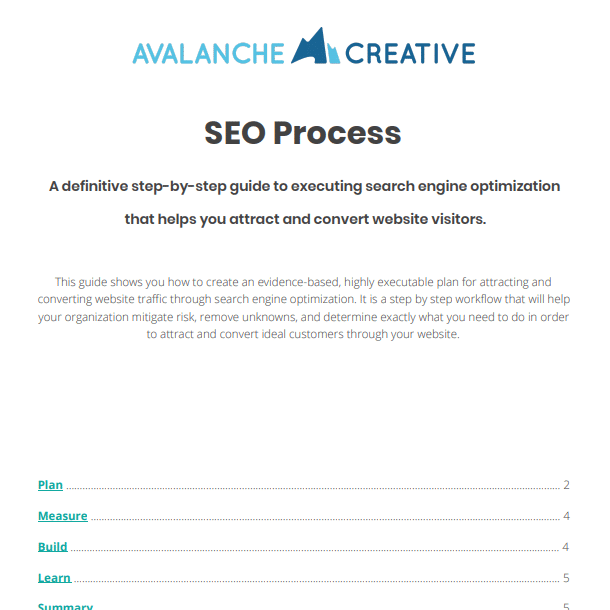How Healthcare SEO Works (and Why It Builds Patient Trust)
Category: Industry Guide, Search Engine Optimization | Tags:
Picture someone who just moved to your city. They know they need a new primary care provider, so they search “primary care physician near me.”
They scroll past the ads—like 80% of users do—and start comparing what shows up next: local listings, healthcare directories, and hospital websites. Each of those results is competing for their attention, and each one represents an opportunity for a medical provider to win a new patient.
Those directories rank high because they understand user intent—what people want when they search. In this case, the intent is simple: find a nearby, qualified primary care provider. If your practice can anticipate and meet that same intent, you’ll attract more of the right patients through search.
In This Guide
Why SEO for Healthcare?
People trust search engines to help them make healthcare decisions. In fact, 66% of internet users look online for information about specific medical conditions or providers, including older adults who frequently need care.
If your practice isn’t visible in those results, you’re missing opportunities to connect with patients who are actively looking for your services. Healthcare SEO helps you capture that traffic and turn it into booked appointments.
Healthcare SEO Strategies
Effective SEO for healthcare goes beyond adding keywords. It’s about understanding your patients’ needs and creating content that builds trust, authority, and accessibility.
Using Search Empathy to Understand Your Patients
The most successful healthcare organizations focus on people, not pages.
Search empathy means understanding what your patients are searching for and why. They might be anxious about symptoms, comparing treatment options, or looking for reassurance that your providers are credible and kind.
Creating helpful, patient-centered content, rather than promotional fluff, builds trust. Show that you understand their questions and can guide them toward better health decisions.
Practical ways to apply search empathy:
- Answer common health questions directly on your site.
- Offer information in multiple formats (written articles, videos, patient stories).
- Base your content strategy on real patient feedback and inquiries.
- Keep your website updated with accurate, relevant medical information.
Implementing On-Page, Off-Page, & Technical SEO
Every successful healthcare SEO strategy balances three pillars:
- On-page SEO: Optimize your website content and structure. Use relevant medical terms naturally in page titles, headings, and copy to signal your expertise to both patients and search engines.
- Off-page SEO: Earn backlinks from credible sources like hospital partners, insurance providers, or trusted directories to strengthen your domain authority.
- Technical SEO: Make sure your site loads fast, stays secure, and is easy for both Google and patients to navigate.
Creating Meta Titles and Descriptions
Meta titles and descriptions might seem minor, but they’re your first impression on Google. Write concise, keyword-rich summaries that reflect each page’s content and help patients feel confident clicking through.
Optimizing Page Load & Mobile Compatibility
Most patients will find you on their phones. A slow or clunky mobile experience can make your practice look outdated—or worse, untrustworthy. Google rewards fast, mobile-friendly sites because they create a better user experience.
Designing a Usable Website
Your website is often a patient’s first interaction with your brand. A clean, intuitive design can make the difference between scheduling an appointment and bouncing to a competitor.
- Use clear navigation menus.
- Include appointment request buttons above the fold.
- Link related service pages together for easy browsing.
Conducting Keyword Research
Keyword research helps you understand how potential patients describe their needs. Tools like SEMrush or Google Search Console can reveal what conditions, treatments, or specialists people are looking for.
For example, if you offer sports medicine, you might find patients searching for “knee pain doctor near me” or “how to treat a sports injury.” Build pages or blog posts around these terms to attract qualified traffic.
Writing Content
Create educational, empathetic content that reflects how patients think and feel. Blog posts about symptoms, treatments, or preventive care show expertise and build trust over time. The more helpful your content, the more likely patients are to return—and to recommend your practice to others.
Building Links
Link building reinforces your credibility. Earning backlinks from trusted medical sites, insurance networks, or hospital partners signals to Google that your content is accurate and authoritative.
Utilizing Social Media
Social media can amplify your reach. Share educational posts, link to your service pages, and celebrate your providers. It’s another way to humanize your brand while strengthening your SEO through referral traffic.
Targeting Local SEO
Most patients want care close to home. Local SEO helps you show up for searches like “urgent care near [city]” or “pediatrician accepting new patients.”
Optimize your Google Business Profile, list your locations clearly on your site, and create individual pages for each office or specialty area. Local visibility helps turn online searches into real appointments.
Earn Trust Before the First Appointment
Healthcare SEO isn’t about chasing algorithms but helping patients find care they can trust.
When your practice consistently shows up for the right searches, you become the trusted choice long before the first appointment is booked.
At Avalanche Creative, we help healthcare organizations build SEO strategies that improve visibility, authority, and patient connection, all while keeping compliance and compassion front and center. Sound like something your clinic needs? Let’s chat.
Share this article:
The Avalanche Email: Fun. Simple. Educational. No Selling.
Learn Result-focused SEO & Content
Join over 2,272+ others who get one email every Wednesday with simple instructions on how to get more website traffic and leads through SEO and content marketing. (Learn more about the email)
Keep Learning
How To Show Up in Gemini (And Win More Local Jobs)
Show up in Gemini when homeowners search for landscaping services. Build the right signals on Google and your website to win more qualified local jobs.
How to Run Google Ads for Landscapers: A Complete Guide
Learn how to set up Google Ads for landscapers, attract qualified leads, and win more local jobs with this step-by-step guide.
🏔️ Watering > Planting New Seeds
Your next marketing win may already be on your site. Learn how to optimize existing pages for better rankings, traffic, and results.
The Recipe vs. The Meal
Your customers buy the experience, not the product. Discover a simple way to shift your message from ingredients to the full meal.
🏔️ Hook, Line, and Sinker 🎣
Use this fishing framework to turn your posts into stories that capture attention, create tension, and inspire action from your audience.
🏔️ Avoid Everything That Doesn’t Move You Forward
Stop chasing shiny tools and refocus on what moves your marketing toward the end zone. Simple steps to cut noise and make steady progress.




